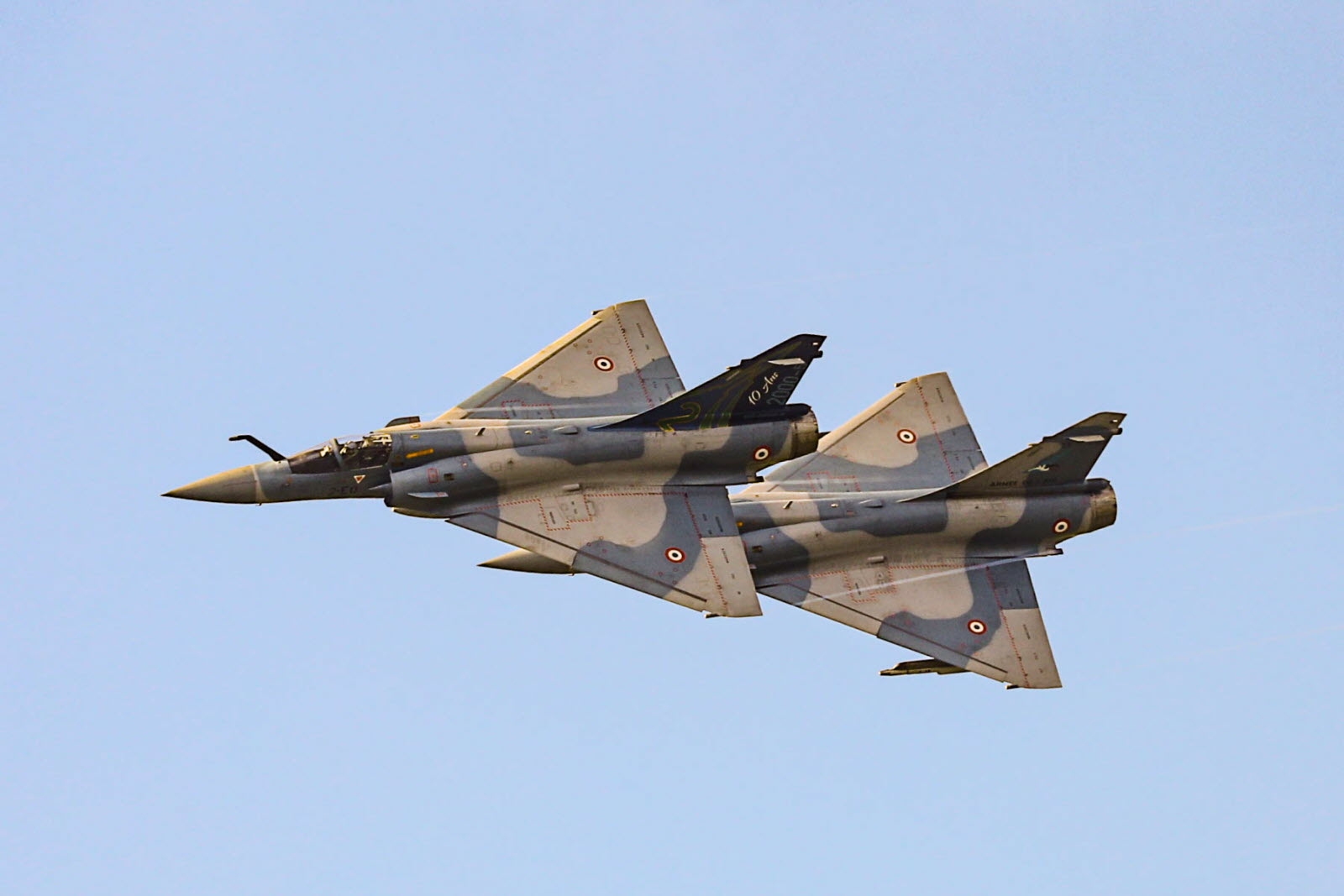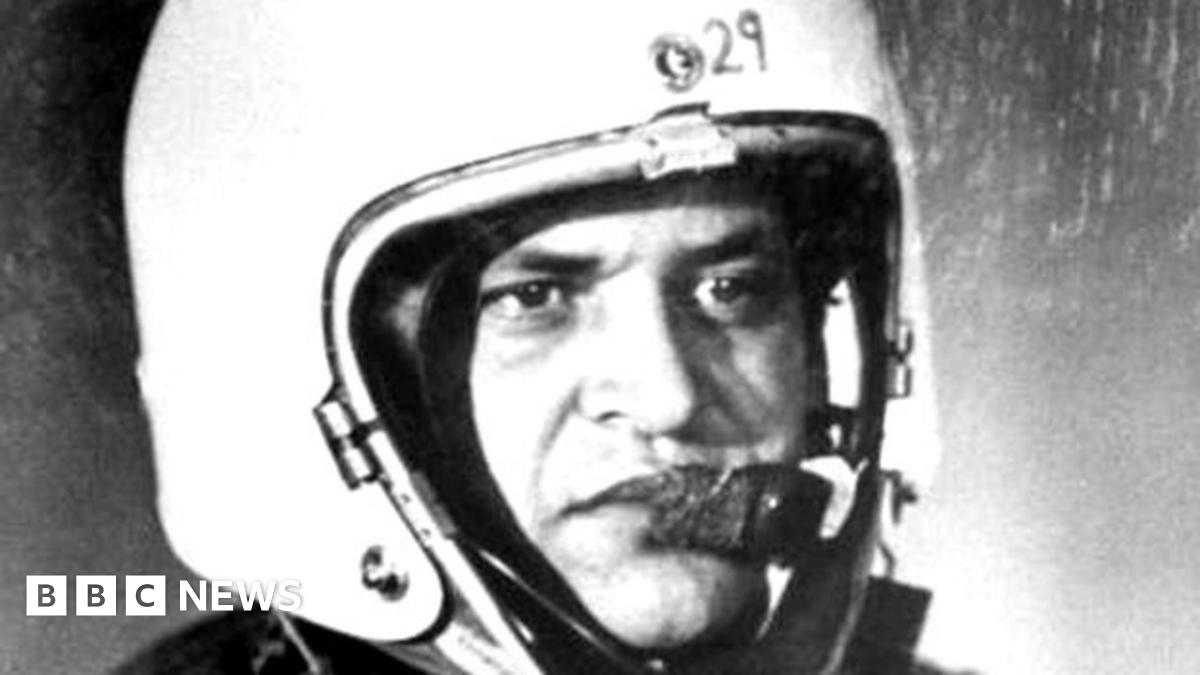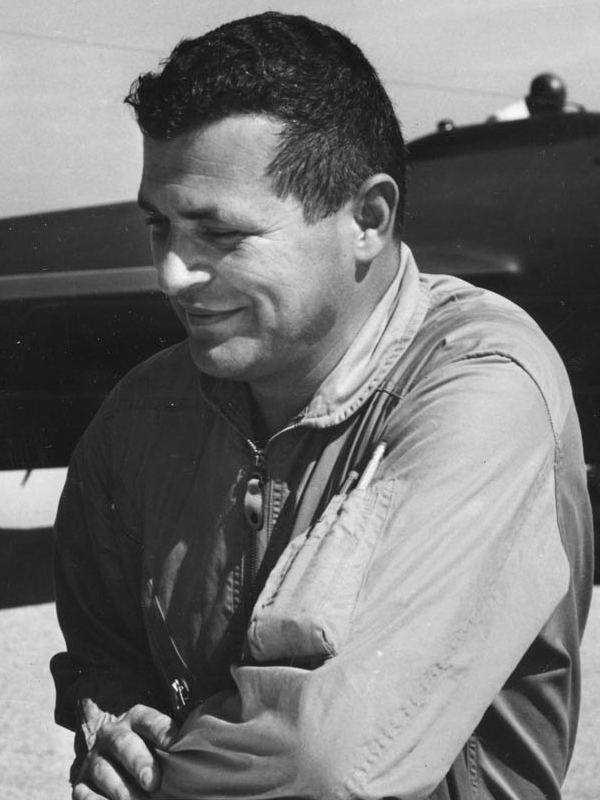PakistanProud
Moderator
- 358
- 238
- Origin

- Axis Group

- Copy to clipboard
- Moderator
- #1
Date of Event:
Apr 26, 1974
In the annals of military history, some stories stand out for their unexpected twists and turns. One such event occurred half a century ago, on April 26, 1974, when Flight Lieutenant Sattar Alvi, a Pakistani pilot, accomplished a rare feat by shooting down an Israeli fighter jet while flying a MiG aircraft for the Syrian Air Force.
The backdrop to this rare incident lies in the aftermath of the 1967 Arab-Israeli War. The swift and decisive victory of Israel in that conflict had reshaped the geopolitical dynamics of the region, leaving neighboring Arab states in a state of disarray and humiliation.
However, tensions persisted, and six years later, the region once again became a theater of conflict during the Yom Kippur War of 1973. Israel found itself in intense combat against a coalition of Arab states led by Egypt and Syria, with Pakistan unexpectedly joining the fray.
When hostilities erupted, several Pakistani Air Force pilots, including Sattar Alvi, volunteered to join the war despite Pakistan having no direct involvement in the conflict.
The country's leadership endorsed the decision to send Pakistani pilots to the Middle East, including Prime Minister Zulfikar Ali Bhutto, who wanted to maintain strong relations with Arab nations.
In an interview, Alvi recounted how the Pakistani Air Chief's conversation with President Hafez al-Assad of Syria paved the way for their participation in the war effort.
He said, "I took one of my salwar kameez and flying gear, and when we reached Peshawar, we found out that 14 more people had also volunteered. We were put on the Chief's Fokker ship, and after a while, the Chief also came. We had no idea where we were going."
The Pakistani pilots were asked to sign a document stating that during their time abroad, if any unforeseen incidents occurred, neither the Government of Pakistan nor the Pakistani Air Force would assume responsibility for them.
According to Sattar Alvi, the document outlined their departure from overseas leave and absolved the authorities of any liabilities in case of untoward events.
Subsequently, the pilots were transported to Karachi and then to Baghdad via a C-130 aircraft. From Baghdad, Sattar Alvi and his companions embarked on a journey by road, making their way to Jordan and ultimately to Damascus.
Of the 16 Pakistani pilots, eight were dispatched to Egypt, while the remaining eight were directed to stay in Syria. Sattar Alvi was among those instructed to remain in Syria.
Later, Alvi and his fellow pilots were relocated to the Damir air base, situated approximately 30 minutes from Damascus, where they were designated as the 67A unit.
[h2]Major Challenge Faced By Pakistani Pilots [/h2]By the time they arrived, Egypt and Israel had already reached a ceasefire agreement, leaving Syria alone engaged in active conflict with Israel. Even so, the Pakistani pilots began their operations in the designated country.
However, the transition was not without its challenges. As Sattar Alvi recounted, the language barrier was foremost among these.
The Russian-made MiG-21 aircraft they were tasked to fly featured inscriptions in Russian, while communications with radars and air traffic control were conducted exclusively in Arabic.
To surmount this obstacle, the pilots devised a practical solution. Alvi explained, "We wrote down the essentials needed to fly the plane and carried them on a piece of paper in our flying suits. This enabled us to grasp the Arabic language required within a week."
Assigned to the crucial role of air defense, the Pakistani pilots were entrusted with intercepting any Israeli aircraft breaching Syrian airspace. Despite the ceasefire between Egypt and Israel, the conflict persisted in the Golan Heights region.

Alvi described the rigorous routine they adopted: preparing each morning before Sehri, the pre-dawn meal during Ramadan, and awaiting potential assignments at the airport. This routine persisted for an arduous seven months.
Throughout their deployment, the Pakistani pilots faced numerous sorties, often encountering Israeli planes. Even after these encounters, Alvi noted that no direct engagements ensued between the two forces.
The Pakistani pilots had decided that whether they succeeded in shooting down an Israeli plane or not, their top priority was to ensure that no Pakistani pilot would be captured by the Israelis. This decision formed the basis of their air strategy.
[H2]How Pakistani Pilot Downed An Israeli Jet[/H2]
On April 26, 1974, Alvi, who was serving as Flight Lieutenant, piloted a SAF MiG-21F-13 (Serial No. 1863) while on secondment to the No. 67A Squadron, Syrian Air Force (SAF), stationed at Dumayr Air Base, Syria.
 Image for Representation: Mirage 2000
Image for Representation: Mirage 2000
Eight Pakistani pilots, including Sattar Alvi, formed the Shahbaz 8 formation during a tense aerial encounter over Lebanon. Alvi recalled how the formation commander, moments before losing communication, directed them to turn towards the reported arrival direction of Israeli aircraft.
As the situation unfolded, Alvi noticed a shining object descending towards the earth, which he identified as an Israeli Mirage warship. Separating from his formation, Alvi maneuvered to confront the approaching aircraft.
Engaging in a high-stakes aerial dance known as 'squires,' Alvi found himself in a precarious position as the Israeli Mirage closed in. With fuel running low and another Israeli fighter approaching, Alvi had to act swiftly.
Spotting an opportunity as the Israeli pilot attempted to evade, Alvi fired his Russian-made missile. A tense moment ensued as the missile failed to launch immediately, leaving Alvi grappling with uncertainty.
Finally, the missile launched, striking the Israeli Mirage and ending the brief skirmish. Alvi returned to base, narrowly avoiding disaster as his fuel gauge plummeted below zero.
After that, Alvi received the Syrian government's highest honor for his valorous action. On the other hand, the Israeli pilot, identified as Captain Lutz, was allegedly captured but succumbed to his injuries before Alvi could meet him.
Meanwhile, Alvi remained silent about the incident for years, even denying his involvement when questioned. The government of Pakistan eventually awarded him the Star of Courage.
The veracity of this account, however, remains shrouded in ambiguity. Despite assertions from Pakistani sources, no major contemporary reports corroborate the incident. Further, Israel's Ministry of Defense's record of casualties from the war makes no mention of a "Captain Lutz," casting doubt on the purported engagement.
The backdrop to this rare incident lies in the aftermath of the 1967 Arab-Israeli War. The swift and decisive victory of Israel in that conflict had reshaped the geopolitical dynamics of the region, leaving neighboring Arab states in a state of disarray and humiliation.
However, tensions persisted, and six years later, the region once again became a theater of conflict during the Yom Kippur War of 1973. Israel found itself in intense combat against a coalition of Arab states led by Egypt and Syria, with Pakistan unexpectedly joining the fray.
When hostilities erupted, several Pakistani Air Force pilots, including Sattar Alvi, volunteered to join the war despite Pakistan having no direct involvement in the conflict.
The country's leadership endorsed the decision to send Pakistani pilots to the Middle East, including Prime Minister Zulfikar Ali Bhutto, who wanted to maintain strong relations with Arab nations.
In an interview, Alvi recounted how the Pakistani Air Chief's conversation with President Hafez al-Assad of Syria paved the way for their participation in the war effort.
He said, "I took one of my salwar kameez and flying gear, and when we reached Peshawar, we found out that 14 more people had also volunteered. We were put on the Chief's Fokker ship, and after a while, the Chief also came. We had no idea where we were going."
The Pakistani pilots were asked to sign a document stating that during their time abroad, if any unforeseen incidents occurred, neither the Government of Pakistan nor the Pakistani Air Force would assume responsibility for them.
According to Sattar Alvi, the document outlined their departure from overseas leave and absolved the authorities of any liabilities in case of untoward events.
Subsequently, the pilots were transported to Karachi and then to Baghdad via a C-130 aircraft. From Baghdad, Sattar Alvi and his companions embarked on a journey by road, making their way to Jordan and ultimately to Damascus.
Of the 16 Pakistani pilots, eight were dispatched to Egypt, while the remaining eight were directed to stay in Syria. Sattar Alvi was among those instructed to remain in Syria.
Later, Alvi and his fellow pilots were relocated to the Damir air base, situated approximately 30 minutes from Damascus, where they were designated as the 67A unit.
[h2]Major Challenge Faced By Pakistani Pilots [/h2]By the time they arrived, Egypt and Israel had already reached a ceasefire agreement, leaving Syria alone engaged in active conflict with Israel. Even so, the Pakistani pilots began their operations in the designated country.
However, the transition was not without its challenges. As Sattar Alvi recounted, the language barrier was foremost among these.
The Russian-made MiG-21 aircraft they were tasked to fly featured inscriptions in Russian, while communications with radars and air traffic control were conducted exclusively in Arabic.
To surmount this obstacle, the pilots devised a practical solution. Alvi explained, "We wrote down the essentials needed to fly the plane and carried them on a piece of paper in our flying suits. This enabled us to grasp the Arabic language required within a week."
Assigned to the crucial role of air defense, the Pakistani pilots were entrusted with intercepting any Israeli aircraft breaching Syrian airspace. Despite the ceasefire between Egypt and Israel, the conflict persisted in the Golan Heights region.
Alvi described the rigorous routine they adopted: preparing each morning before Sehri, the pre-dawn meal during Ramadan, and awaiting potential assignments at the airport. This routine persisted for an arduous seven months.
Throughout their deployment, the Pakistani pilots faced numerous sorties, often encountering Israeli planes. Even after these encounters, Alvi noted that no direct engagements ensued between the two forces.
The Pakistani pilots had decided that whether they succeeded in shooting down an Israeli plane or not, their top priority was to ensure that no Pakistani pilot would be captured by the Israelis. This decision formed the basis of their air strategy.
[H2]How Pakistani Pilot Downed An Israeli Jet[/H2]
On April 26, 1974, Alvi, who was serving as Flight Lieutenant, piloted a SAF MiG-21F-13 (Serial No. 1863) while on secondment to the No. 67A Squadron, Syrian Air Force (SAF), stationed at Dumayr Air Base, Syria.

Eight Pakistani pilots, including Sattar Alvi, formed the Shahbaz 8 formation during a tense aerial encounter over Lebanon. Alvi recalled how the formation commander, moments before losing communication, directed them to turn towards the reported arrival direction of Israeli aircraft.
As the situation unfolded, Alvi noticed a shining object descending towards the earth, which he identified as an Israeli Mirage warship. Separating from his formation, Alvi maneuvered to confront the approaching aircraft.
Engaging in a high-stakes aerial dance known as 'squires,' Alvi found himself in a precarious position as the Israeli Mirage closed in. With fuel running low and another Israeli fighter approaching, Alvi had to act swiftly.
Spotting an opportunity as the Israeli pilot attempted to evade, Alvi fired his Russian-made missile. A tense moment ensued as the missile failed to launch immediately, leaving Alvi grappling with uncertainty.
Finally, the missile launched, striking the Israeli Mirage and ending the brief skirmish. Alvi returned to base, narrowly avoiding disaster as his fuel gauge plummeted below zero.
After that, Alvi received the Syrian government's highest honor for his valorous action. On the other hand, the Israeli pilot, identified as Captain Lutz, was allegedly captured but succumbed to his injuries before Alvi could meet him.
Meanwhile, Alvi remained silent about the incident for years, even denying his involvement when questioned. The government of Pakistan eventually awarded him the Star of Courage.
The veracity of this account, however, remains shrouded in ambiguity. Despite assertions from Pakistani sources, no major contemporary reports corroborate the incident. Further, Israel's Ministry of Defense's record of casualties from the war makes no mention of a "Captain Lutz," casting doubt on the purported engagement.












